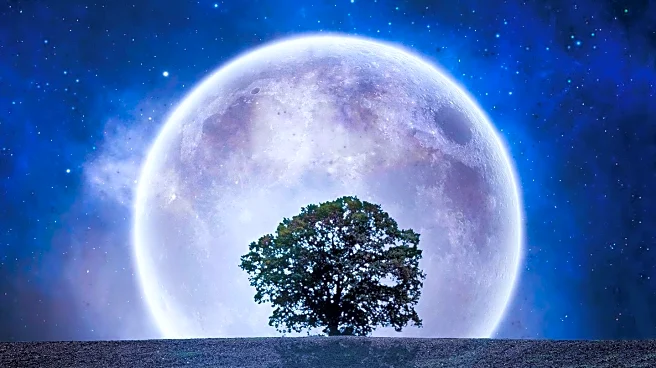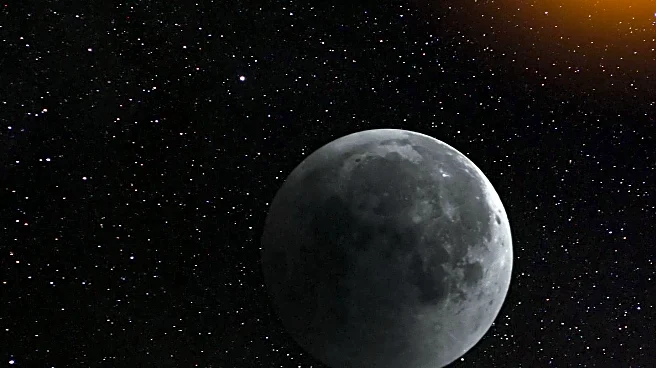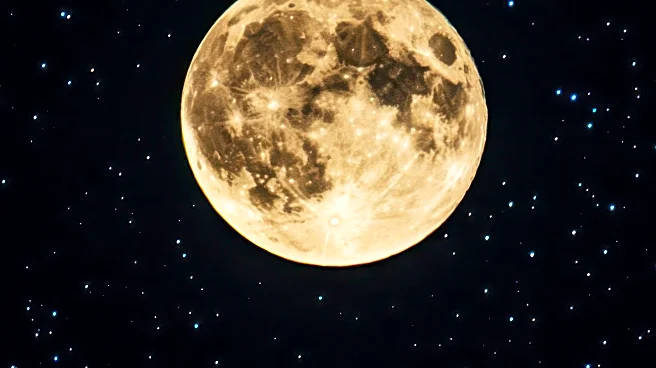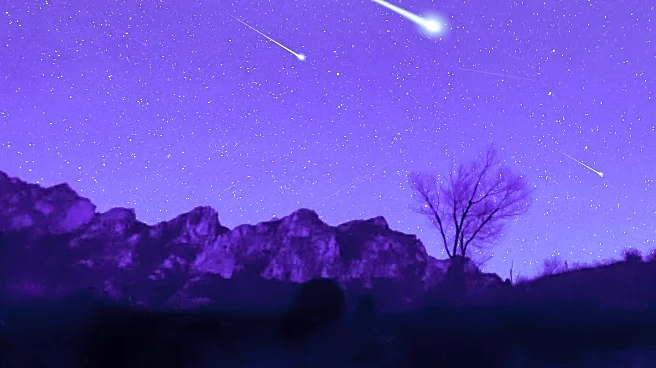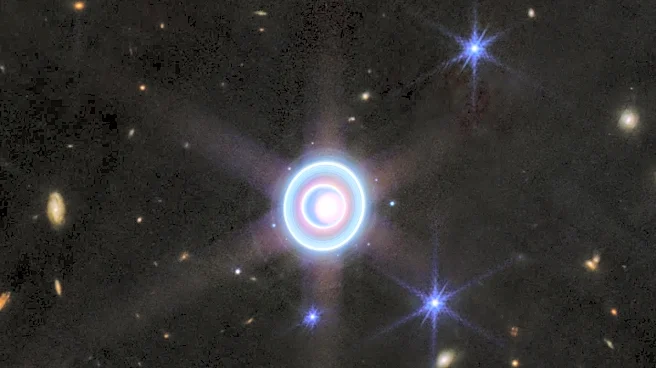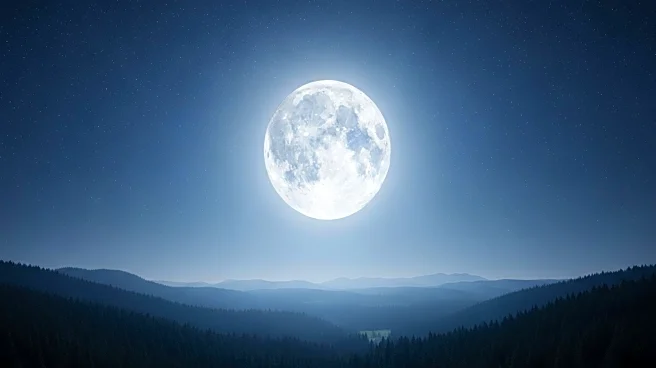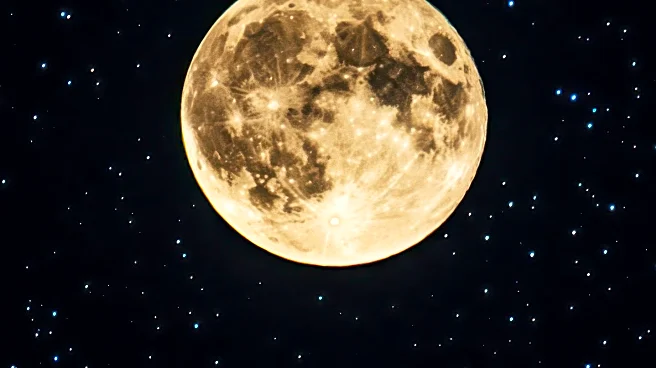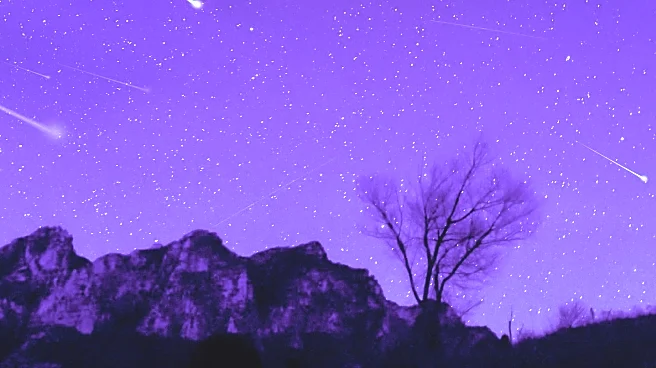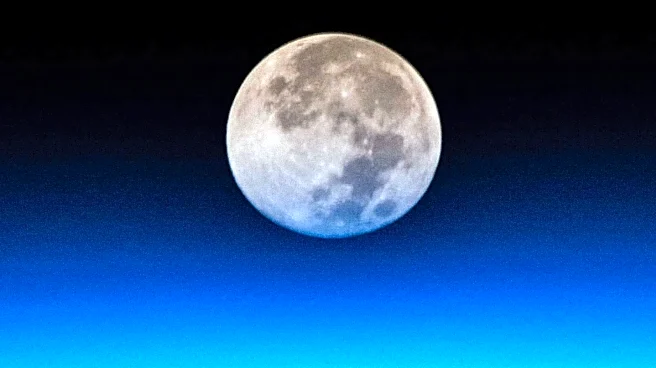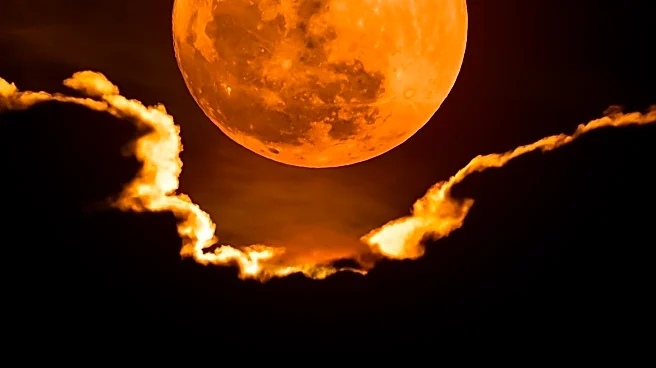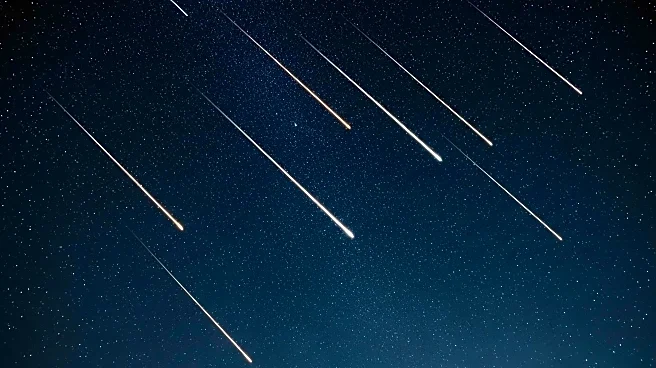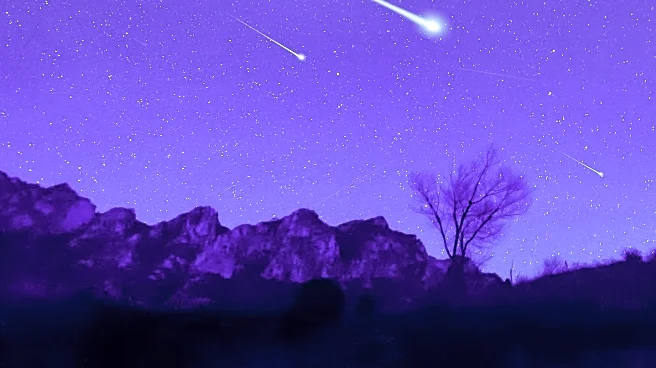What is the story about?
What's Happening?
The harvest moon, the first full moon of fall in the Northern Hemisphere, is set to reach peak illumination at 11:49 p.m. EST on October 6, 2025. This event qualifies as a supermoon due to its proximity to Earth, appearing larger and brighter than usual. The moon will be visible in North America at moonrise on October 7, shortly after sunset. The Draconid meteor shower will also peak overnight on October 8-9, although the brightness of the harvest moon may obscure the visibility of the meteors. Observers are advised to find elevated locations or open fields with a clear view of the eastern horizon to best experience the moonrise.
Why It's Important?
The harvest moon is a significant astronomical event that draws attention from enthusiasts and the general public alike. As a supermoon, it offers a unique opportunity for sky watchers to observe the moon in its larger and brighter form. This event also coincides with the Draconid meteor shower, providing a dual spectacle for those interested in celestial phenomena. The visibility of the harvest moon can impact cultural activities, such as festivals and gatherings, that celebrate the changing seasons. Additionally, the event may influence scientific observations and studies related to lunar cycles and their effects on Earth.
What's Next?
Following the harvest moon, the next full moon will be the beaver moon, expected to be the year's largest supermoon on November 5, 2025. This sequence of supermoons provides ongoing opportunities for observation and study. As the lunar cycle progresses, astronomers and enthusiasts will continue to monitor and document these events, contributing to a broader understanding of lunar dynamics. Public interest in these phenomena may lead to increased participation in astronomy-related activities and educational programs.
Beyond the Headlines
The harvest moon's occurrence as a supermoon highlights the intricate relationship between celestial bodies and their impact on Earth. This event underscores the importance of understanding lunar cycles and their potential effects on natural phenomena, such as tides and animal behavior. The cultural significance of the harvest moon, often associated with harvest festivals and traditions, reflects humanity's longstanding connection to lunar events. As technology advances, the ability to predict and observe these occurrences with greater accuracy enhances both scientific knowledge and public engagement.
AI Generated Content
Do you find this article useful?
